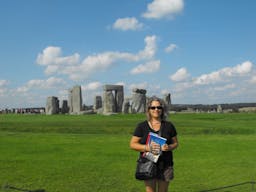The Archetype of the Womb Part 2 --bull head and horns
Jan 21, 2015
Story
The Archetype of the Womb
Part 2
Bull head and horns
by
Theresa C. Dintino
Around 10,000 BCE the Archetype of the Womb arose in the human psyche in the form of bucrania (bull head and horns). Throughout the Middle East at this time archeologists begin to find the skulls and horns of wild bulls and cows buried underneath housing, embedded inside the plaster of the walls and benches. Though these are often interpreted as a symbol of the bull, they are in fact the womb of the Goddess.
It was Dorothy Cameron who originally pointed out that the bucrania image, so omnipresent in the cultures that worshiped the Goddess in prehistory, is a perfect replica of a human woman╒s uterus, fallopian tubes and ovaries.i
We know that ancient people knew human anatomy because they engaged in the process of excarnation. Excarnation is a process where the bodies of the recently dead were left out in the open air to be exposed to the elements, sun, wind, rain and vultures╤their flesh offered up as food. The priest/priestess carrying out the service would have observed the internal organs at certain stages of decomposition; they would have seen the female reproductive organs in various stages of pregnancy. The flesh they offered to the vultures, the sun, the wind, the air for further transmutation. The cleaned and bleached bones they carried back to their shrines, temples, placed them into clay pots or baskets and buried them under the floors of their houses. Undoubtedly there were rituals involving the bucrania that invoked returning them, in the form of their cleaned and prepared bones, to the womb of the Goddess for rebirth.
Bucrania images were often created out of plaster with actual horns. These carefully crafted images protruded from walls of tomb like spaces, adorned altars or the ends of benches. They were painted onto pots and clay vessels as well. Later the image is stylized into the downward facing triangle. The Egyptian hieroglyph for uterus is V.
To learn more about Catal Huyuk visit:
http://www.ritualgoddess.com/aboutcatalhuyuk.htm
In an astounding image from Egypt in Saqqara╤the cemetery site for early dynastic Memphis, (3100-2800 BCE.) 300 Bucrania surround tomb #3504 excavated by Emery. The heads are made of mud but the horns are genuine. They must have been collecting them for some time. These 300 line perfectly the outer wall of the tomb complex. It is a powerful image. The idea of rebirth within the womb of the Goddess imaged as the bucrania and horns has a powerful and central presence in Egypt at this time.
All rights reserved. This copyrighted material may not be reproduced without permission. Links are encouraged.
to view this entry with images go to: http://www.the2012vortex.com
i D.O. Cameron, Symbols of Birth and of Death in the Neolithic Era, (London:Kenyon-Deane, 1981.)




